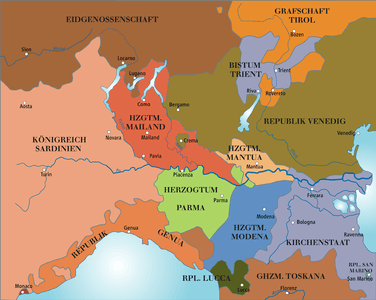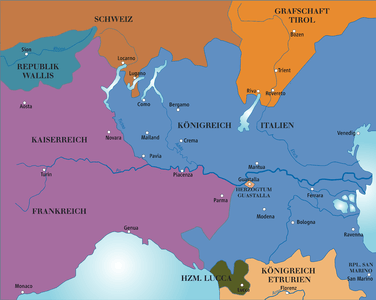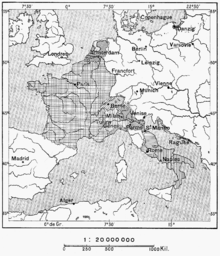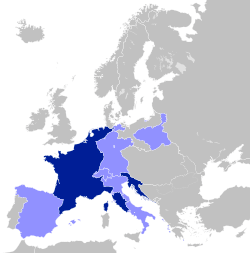Sister republic

A sister republic (French: république sœur) was a republic established by the French army that was catalyzed by local revolutionaries and assisted by the First French Republic during the French Revolutionary Wars.
History
The French Revolution was a period of social and political upheaval in France from 1789 until 1799. The Republicans who overthrew the monarchy were driven by ideas of popular sovereignty, rule of law and representative democracy. The Republicans borrowed ideas and values from Whiggism and Enlightenment philosophers. The French Republic supported the spread of republican principles in Europe, but most of these sister republics became a means of controlling occupied lands as client regimes through a mix of French and local power.[1]
In France, Revolutionary Republicanism was based on limiting corruption and greed. The revolutionaries saw these vices as endemic, but as more preventable in a republic. A virtuous citizen was defined as one who ignored monetary compensation and made a commitment to resist and eradicate corruption. The Republic was sacred; therefore, it was necessary to serve the state in a truly representative way, ignoring self-interest and individual will. The French Revolution looked to incorporate these founding ideals and to export them throughout Europe. Most of these sister republics were short-lived. As the revolutionary republic became the Napoleonic Empire, they were often annexed to France proper or subsumed into more openly French puppet regimes.
French sister republics of Italy
- Republic of Alba (1796) reconquered by the Kingdom of Sardinia
- Republic of Pescara (1799)
- Parthenopean Republic (1799) reconquered by the Sanfedisti for the King of Naples and Sicily
- Roman Republic (1798–1799) ended with the restoration of the Papal States
- Republic of Ancona (1797–1798) joined Roman Republic
- Tiberina Republic (1798–1799) joined Roman Republic
- Lémanique Republic (1798) joined the Helvetic Republic
- Subalpine Republic (1802) annexed to the French Republic (Novara to the Italian Republic)
- Piedmontese Republic (1798–1799), conquered by Austro-Russian troops and rendered back to Sardinia, but reconquered by Napoleon in 1800 and renamed Subalpine Republic
- Ligurian Republic (1796–1805) annexed to the French Empire
- Republic of Lucca (1799 and 1801–05), replaced by the Principality of Lucca and Piombino
- Italian Republic (1802–1805) transformed into the Kingdom of Italy
- Cisalpine Republic (1797–1802) transformed into the Italian Republic
- Cispadane Republic (1796–1797) formed the Cisalpine Republic
- Bolognese Republic (1796) annexed to the Cispadane Republic
- Republic of Bergamo (1797) formed the Cisalpine Republic
- Transpadane Republic (1796–1797) formed the Cisalpine Republic
- Republic of Crema (1797) formed the Cisalpine Republic
- Republic of Brescia (1797) formed the Cisalpine Republic
- Cispadane Republic (1796–1797) formed the Cisalpine Republic
- Cisalpine Republic (1797–1802) transformed into the Italian Republic
 1796: Northern Italy before
1796: Northern Italy before
the French invasion 1803: Sister Republics
1803: Sister Republics
in Northern Italy Sister Republics
Sister Republics
replaced by monarchies
Other French sister republics

- Republic of Bouillon (1794–1795)
- Republic of Liège (1789–1791)
- Republic of Rauracia (German: Raurakische Republik; French: Republique Rauracienne) revolutionary French republic in Basel (1792–1793)
- Republic of Mainz revolutionary French republic in Rhenish Hesse and the Electoral Palatinate (1793)
- Batavian Republic (1795–1806) Netherlands
- Cisrhenian Republic (1797) Germany
- Republic of Connacht (1798) accompanied Humbert's Irish expedition in support of the Irish Rebellion of 1798
- Helvetic Republic (1798–1803) Switzerland
- Republic of Danzig (1807–1814)
- Illyrian Republic (1809)
- Rhodanic Republic (1802–1810) (Valais)
References
- ↑ Van Wie, Paul D. (1999). Image, History, and Politics: The Coinage of Modern Europe. pp. 116–7. Retrieved 24 June 2015.
